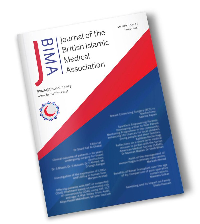
Caring for Muslim Patients
By Prof Aziz Sheikh & Dr. Abdul Rashid Gatrad
Published 2000
Reviewed by Ahmed Ashour, MRPharmS
PhD Fellow, University of Manchester
GPhC- Registered Pharmacist
[email protected]
As healthcare professionals, we are exposed to the beauty of the British population with its varied religions, numerous ethnicities and cultures. However, this key characteristic of the demographic of the UK can be an added challenge when dealing with a specific sub-population whom we are unfamiliar of their rules and customs. In this short and concise piece, the editors have collated pieces from a variety of authors to educate the reader, mostly healthcare professionals, on the background of the Islamic faith, in addition to important issues to be understood when caring for a patient who identifies as a Muslim.
The book is split into three main sections. Firstly, an overview of the Muslim faith and secondly, a more specific focus on important issues when caring for a Muslim patient. Finally, the editors give important resources including contact information for important organisations, as well as the meaning of some important terms relating to health in the Islamic faith. It is the
Having been written in the early 2000s, many of the statistics in this edition are outdated, and the concepts regarding the assumptions of Muslim patients have progressed, however this book presents a reminder for the progress still to be made in educating the Muslim population in the UK on specific issues. However, for a high-level overview, this book is an essential read for any healthcare professionals caring for a number of Muslim patients, to better understand their patients and the external issues they have to deal with outside of the immediate symptoms or issues the patient is presenting with.
Section one starts by giving an overview to the demographics of UK Muslims, as well as their socio-economic position, before presenting an overview of the Islamic beliefs and the intersection of health and religion from a Muslim perspective. The authors of these chapters, all academics, give a balanced and objective presentation of Islam, ensuring to explain Islamic concepts that might present barriers to complete communication between a healthcare professional and a patient.
Section two is the gem of this work, breaking down important contextual issues as well explaining important events and chapters in a Muslims life. The editors chose, rightly so, to begin this section with a chapter discussing the family of the patient. While some of the mentioned points seem trivial and not directly linked to the care of a Muslim patient, they are important points to understand for the healthcare professional to better deal with what the patient themselves might have gone through or are going through, when completing a consultation. The book does have a south Asian bias, referring to the moving of a bride to the home of her husband’s family as usual, which is not the case in the Arab culture for example. This could potentially lead to incorrect assumptions when dealing with a Muslim patient, which may be a point to consider in an updated version of this book.
The section then progresses to discuss issues related to the birth customs of a Muslim baby. Again, this section mentions some cultural issues faced by healthcare professionals concerning the naming systems of some sub-groups of the Muslim population, providing a helpful insight for non-Muslim readers. The book then addresses two important events in a Muslims life, the yearly worship of fasting in Ramadan, and the once-in-a-lifetime activity of going to Hajj. Out of all the chapters in this book, these two are the most important for all healthcare professionals, to be able to care for the patients in a complete manner. The authors of these chapters give a comprehensive overview of the worships before the potential health implications such as missed doses and hospitalisation for fasting, and the issues of infectious diseases and dealing with extreme heat and sun when completing Hajj. These are essential as Muslim patients should feel confident that their healthcare professional understands the issues they deal with in their life, while a healthcare professional should be able to understand the importance of these worships, and subsequently tailor the treatment or solution to the patient’s needs.
The authors then conclude this section by discussing death, a key issue in the Islamic faith, even if the patient has passed, to respect their wishes. The authors highlight the divided opinions on matters such as organ donation, as well as the feelings towards death, and a difficult decision some families have to make when their loved ones suffer in their final days. The final chapter in this section discussing how healthcare professionals can bridge the gap when dealing with their Muslim patients, and the education gap that is sometimes present.
Resources, such as the one reviewed here, are essential as the demographic of the UK continues to evolve, and healthcare professionals are dealing with individuals from even more religious, cultural and ethnic backgrounds. More should be done to make these resources up to date and more accessible for the wider healthcare population, in addition to similar editions for other sub-sets of the demographic. Future editions of books on this topic should take care to differentiate between culture and religion, clearly marking the religious requirements compared with the cultural, as this book has attempted to do.

